Elbow
Normal Anatomy of the Elbow
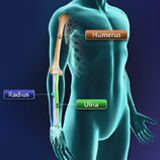
The arm in the human body is made up of three bones that join together to form a hinge joint called the elbow. The upper arm bone or humerus connects from the shoulder to the elbow forming the top of the hinge joint. The lower arm or forearm consists of two bones, the radius and the ulna. These bones connect the wrist to the elbow forming the bottom portion of the hinge joint.
Cubital Tunnel Syndrome
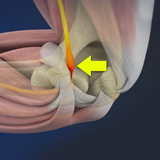
Cubital Tunnel Syndrome is a condition characterized by compression of the ulnar nerve in an area of the elbow called the cubital tunnel.
Tennis Elbow
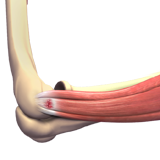
Tennis elbow is the common name used for the elbow condition called lateral epicondylitis. It is an overuse injury that causes inflammation of the tendons that attach to the bony prominence on the outside of the elbow (lateral epicondyle). It is a painful condition occurring from repeated muscle contractions at the forearm that leads to inflammation and micro tears in the tendons that attach to the lateral epicondyle. The condition is more common in sports activities such as tennis, painting, hammering, typing, gardening and playing musical instruments. Patients with tennis elbow experience elbow pain or burning that gradually worsens and results in a weakened grip.
Rupture of the Biceps Tendon
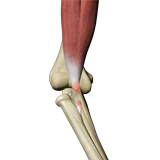
The biceps muscle is located in the front of your upper arm. It helps in bending your elbow, rotational movements of your forearm and maintaining stability in the shoulder joint. It has two tendons, one of which attaches it to the shoulder bone (proximal biceps tendon) and the other attaches it at the elbow (distal biceps tendon). The biceps tendon can tear at the shoulder or elbow with overuse, or injury when you lift heavy objects or fall on your hand.
Elbow Fractures
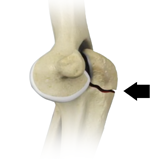
Three bones, the humerus, radius and ulna, make up the elbow joint. Elbow fractures may occur from trauma, resulting from various reasons; some of them being a fall on an outstretched arm, a direct blow to the elbow, or an abnormal twist to the joint beyond its functional limit.
Biceps Tendon Repair

The biceps muscle is located in front of your upper arm. It helps in bending your elbow as well as in rotational movements of your forearm. Also, it helps to maintain stability in the shoulder joint. The biceps muscle has two tendons, one of which attaches it to the bone in the shoulder and the other attaches at the elbow. The biceps tendon at the elbow is called the distal biceps tendon and if there is a tear in this tendon, you will be unable to move your arm from the palm-down to palm-up position. Once the distal biceps tendon is torn, it cannot regrow back to the bone and heal by itself. Permanent weakness during rotatory movements of the forearm may occur if the tendon is not repaired surgically.
Elbow Arthroscopy
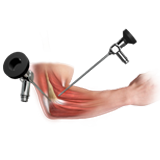
Elbow arthroscopy, also referred to as keyhole or minimally invasive surgery, is performed through tiny incisions to evaluate and treat several elbow conditions.
Elbow Joint Replacement
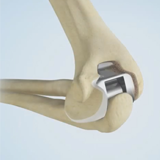
Elbow Joint Replacement, also referred to as Total Elbow Arthroplasty is an operative procedure to treat the symptoms of arthritis that have not responded to non-surgical treatments.







